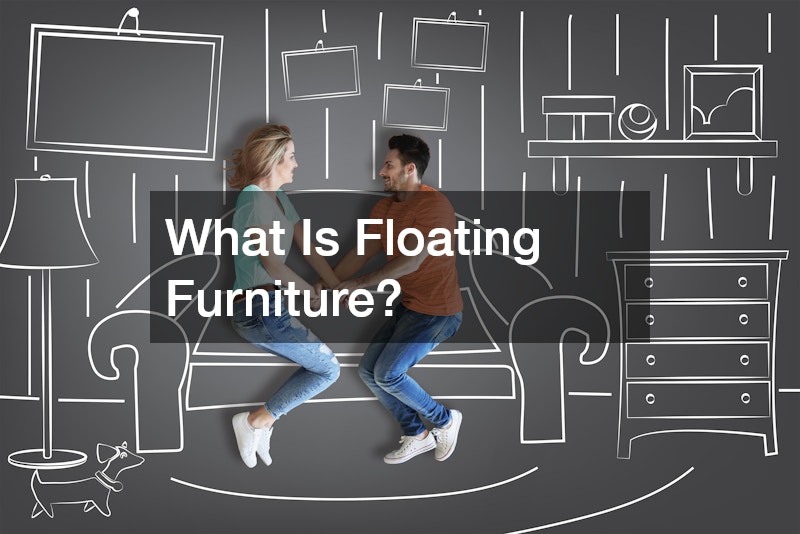Floating furniture is a design concept that creates the illusion of furniture “floating” in a room, away from walls and other architectural elements. Unlike traditional furniture arrangements, where pieces are typically placed against walls or in corners, floating furniture is positioned in the center of the room or at a significant distance from the walls. This approach to interior design is gaining popularity for its ability to make spaces feel more open, flexible, and visually intriguing. Here’s a closer look at what floating furniture is and why it might be a great choice for your home.
1. The Concept of Floating Furniture
The term “floating furniture” refers to the practice of arranging furniture in a way that it appears to be floating in the room. This doesn’t mean the furniture is actually suspended in the air, but rather that it is strategically placed to create a sense of space and flow. For example, a sofa might be positioned in the middle of a living room with a rug underneath, rather than being pushed up against a wall. Similarly, a bed might be placed away from the walls of a bedroom, with ample space around it on all sides.
2. Benefits of Floating Furniture
One of the primary benefits of floating furniture is that it can make a room feel larger and more open. By moving furniture away from the walls, you create more walking space and allow for better circulation throughout the room. This can be especially useful in small spaces, where traditional furniture arrangements might make the area feel cramped.
Floating furniture also encourages more flexible use of space. With furniture centered in a room, you have the freedom to create distinct zones for different activities. For example, in an open-concept living area, you could float a sofa and chairs to define a seating area, while leaving other parts of the room open for dining or entertaining.
3. Aesthetic Appeal
Aesthetically, floating furniture can add a modern, airy feel to a room. It breaks away from the conventional look of lined-up furniture and introduces a more dynamic, layered approach to interior design. The spaces between the furniture and the walls can be used creatively, such as placing a console table behind a sofa or adding floor lamps to create depth and interest.
4. Considerations When Using Floating Furniture
When implementing floating furniture in your home, it’s important to consider balance and proportion. The furniture should be scaled appropriately for the size of the room, and the overall layout should feel cohesive. Rugs play a crucial role in anchoring floating furniture, helping to define the area and prevent the space from feeling too disjointed.

